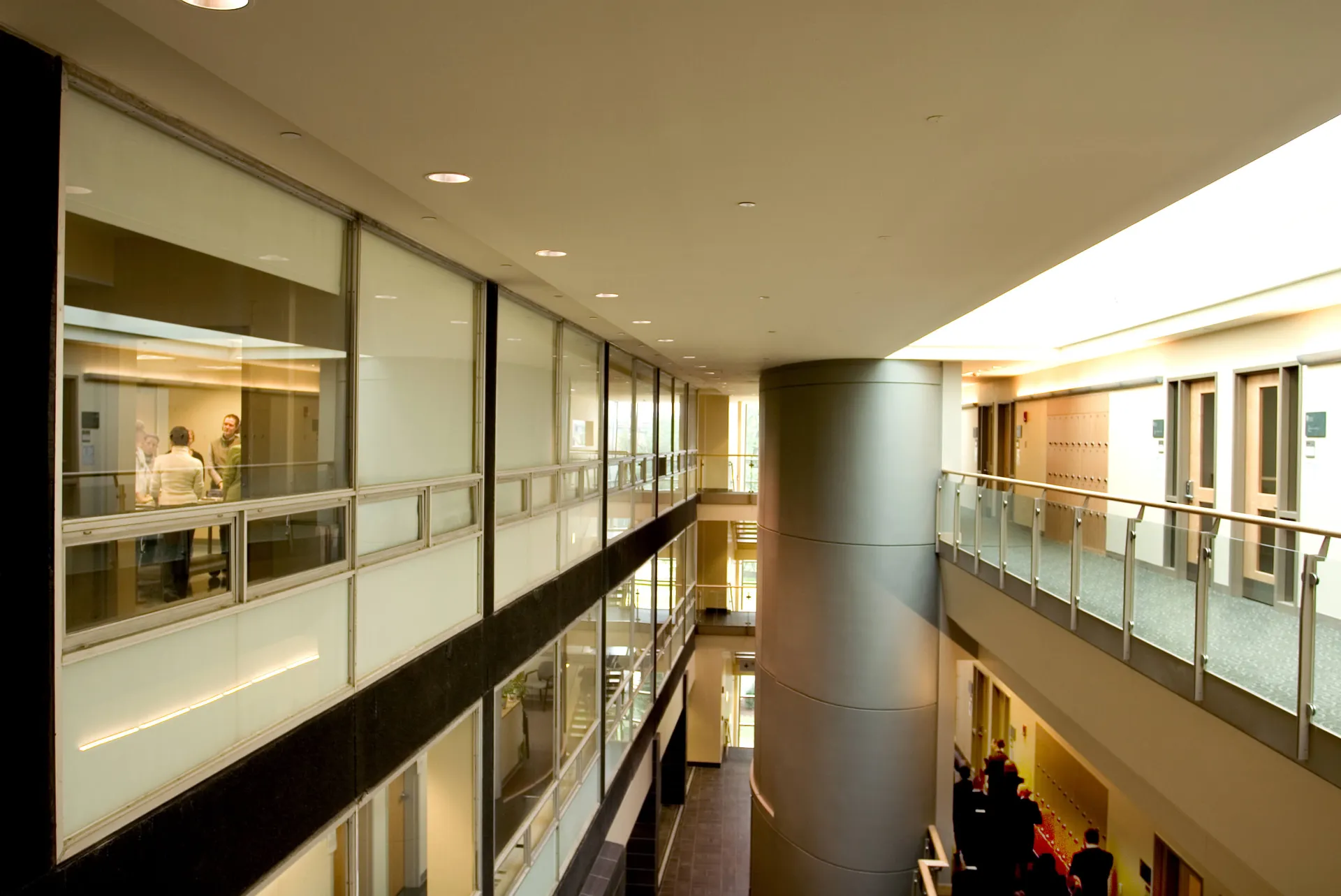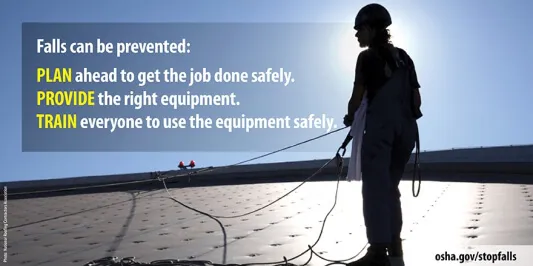Slips, trips and falls are often noted as a #1 OSHA injury. Sicne there are a variety of surfaces on University property, everyone should be aware of this risk. Those who work or visit agricultural areas have an increased risk for these types of injuries. Slips, trips and falls can occur in a variety of areas. Proper housekeeping and lighting in work areas and walking areas can help prevent slip, trip, and fall incidents. The following are areas where slip, trip and fall risks increase.
- Sloped terrain,
- Uneven surfaces,
- Icy sidewalks and parking lots in winter
- Areas that are washed down on a daily basis,
- Hay storage areas,
- On ladders, and
- On steps or platforms.
Walking and working surfaces
Slipping hazards may include wet, icy, greasy, or soiled ground or floors. It is recommended that faculty, staff and students wear slip proof shoes if working in slippery areas. Clean up spills of oily material or corrosive materials immediately.
Foot protection should be assessed per job or activity. Examples may include steel toed shoes, slip-resistant boots or farm boots.The risk of a slip is increased on smooth, greasy or oily surfaces; these can cause a loss of balance and potential injury.
Trips can occur when an obstruction catches someone’s foot and causes him/her to stumble forward. Tripping hazards are commonly caused by the following:
- Electrical or extension cords,
- Uneven floor mats,
- Unseen or unexpected objects in the egress.
Tripping hazards can be prevented by picking up and put away tools, cords or other obstacles after each use. Consider the danger these items could pose to someone else if they are in a walkway.
Falls occur when an individual descends or drops freely by the influence of gravity. This can happen from any surface. However, falls from higher elevations such as ladders, large equipment, elevated surfaces, ramps, or platforms have a much higher risk for injury.
Prevent slip, trip, and fall injuries
Below are some guidelines to consider to help prevent slips, trips and falls.
- Utilize handrails or grab bars in areas where there are stairs or changes in elevation.
- Use 3 points of contact when mounting or dismounting equipment and using ladder
- In wet or slippery conditions, take smaller steps and try to ensure your torso stays balanced over your feet.
- Use slip resistant matting or provide textured surfaces in potentially wet areas.
- Maintain good housekeeping in livestock barns and work areas, by removing manure and keeping surfaces clean and dry.
- Remove obstructions from travel areas, such as extension cords, power cords, hoses, boxes, or tools.
- Use the proper ladder for the job and follow all warning labels.
- Repair uneven / warped flooring, protruding nails, splinters and loose boards, or cracks in concrete which can create an uneven walking surface.
- Sweep loose hay or grains from areas where these materials are handled or stored.
- Minimize distractions to remain alert to hazards and avoid carrying bulky items that block your view.
- Stay alert to items projecting from buildings or equipment.
For more information or to let us know about a slip or trip risk, please contact safety@uvm.edu


